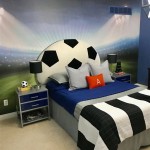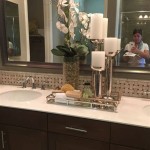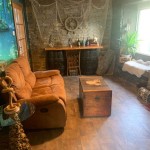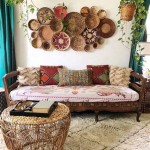How To Decorate A Guy's Room
Decorating a guy's room presents an opportunity to create a personalized space reflecting individual interests and promoting comfort and functionality. This process involves careful consideration of various elements, from color palettes and furniture choices to lighting and accessory placement. Whether aiming for a minimalist aesthetic, a gamer's paradise, or a musician's haven, understanding the fundamental principles of interior design can help achieve a stylish and practical room.
One of the initial steps involves establishing a theme or style. This provides a framework for subsequent design choices, ensuring a cohesive and unified look. Popular themes for men's rooms include industrial, modern, rustic, and minimalist. Researching different styles and gathering inspiration from online resources and magazines can help solidify a desired aesthetic direction.
Choosing a suitable color palette is crucial for setting the room's atmosphere. While personal preferences should guide color selection, it's important to consider the room's size and natural light. Darker colors can make a space feel smaller, while lighter shades create an illusion of spaciousness. A neutral base with accent colors introduced through accessories and textiles offers flexibility and visual interest.
Furniture selection plays a significant role in both functionality and aesthetics. A comfortable bed, a practical desk, and sufficient storage solutions are essential components of a well-designed room. Choosing furniture that complements the chosen style and color palette helps maintain a harmonious atmosphere. Multifunctional furniture, like a storage ottoman or a bed with built-in drawers, can maximize space utilization, particularly in smaller rooms.
Lighting significantly impacts a room's ambiance and functionality. Layered lighting, incorporating ambient, task, and accent lighting, creates a dynamic and versatile environment. Ambient lighting provides overall illumination, while task lighting focuses on specific areas, such as a desk or reading nook. Accent lighting highlights architectural features or artwork, adding depth and visual interest. Utilizing dimmer switches allows for adjustable lighting levels to suit different moods and activities.
Textiles, including bedding, curtains, rugs, and throw pillows, introduce texture, pattern, and color to a room. Choosing materials that complement the chosen style and color palette enhances the overall aesthetic. For instance, a rustic-themed room might benefit from natural materials like linen and wool, while a modern room might feature sleek fabrics like velvet or microfiber.
Wall décor provides an opportunity to personalize a space and reflect individual interests. Framing posters, artwork, or photographs adds personality and visual appeal. Creating a gallery wall using a mix of framed pieces and other decorative elements can serve as a focal point within the room. Consider using shelves to display books, collectibles, or plants, further enhancing the room's character.
Storage solutions are vital for maintaining a clutter-free and organized space. Utilizing shelves, drawers, and storage containers helps maximize space and keeps belongings tidy. Choosing storage solutions that blend seamlessly with the room's décor maintains a cohesive aesthetic. Incorporating hidden storage, such as under-bed drawers or ottomans with storage compartments, can further optimize space utilization.
Personalizing the space with items that reflect individual hobbies and interests adds a unique and personal touch. Displaying musical instruments, sports memorabilia, or travel souvenirs creates a space that feels authentic and representative of the occupant. Incorporating these elements thoughtfully prevents a cluttered appearance and maintains a sense of visual harmony.
Considering the room's layout is crucial for optimizing space and functionality. Arranging furniture strategically to maximize traffic flow and create designated zones for different activities enhances the room's usability. Creating a defined sleeping area, a workspace, and a relaxation zone promotes organization and improves the room's overall functionality.
Incorporating greenery through plants adds life and vibrancy to a room. Choosing low-maintenance plants suitable for indoor environments ensures ease of care. Placing plants strategically within the room can enhance air quality and contribute to a more calming and inviting atmosphere.
Accessorizing thoughtfully with decorative items adds personality and visual interest. Choosing accessories that complement the chosen style and color palette enhances the room's overall aesthetic. Items such as decorative trays, sculptures, or candles can add finishing touches and elevate the room's design.
Regularly decluttering and organizing the space helps maintain a clean and inviting environment. Developing a system for organizing belongings and regularly discarding unwanted items prevents clutter from accumulating and ensures the room remains functional and aesthetically pleasing.

17 Clever Guys Dorm Room Ideas You Can Easily Recreate Designs Mens Decor Bedroom

How To Decorate A Man S Bedroom 20 Cool Design Ideas

Pin On Bedroom Designs

60 Men S Bedroom Ideas To Suit Every Style 2025 Guide

Bedroom Ideas For Young Men Today S Creative Life

How To Decorate A Man S Bedroom 21 Masculine Design Ideas

22 Great Bedroom Decor Ideas For Men Worthminer Design Interior

80 Men S Bedroom Ideas A List Of The Best Masculine Bedrooms Interiorzine

How To Decorate A Man S Bedroom 21 Masculine Design Ideas

17 Clever Guys Dorm Room Ideas You Can Easily Recreate
Related Posts







